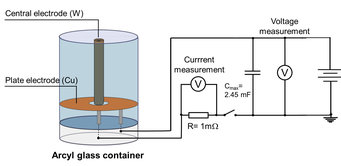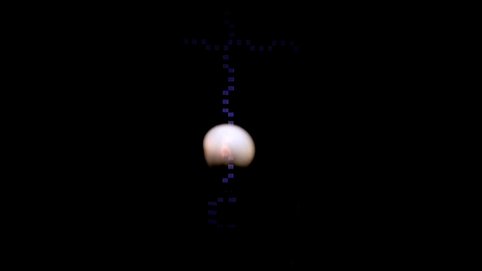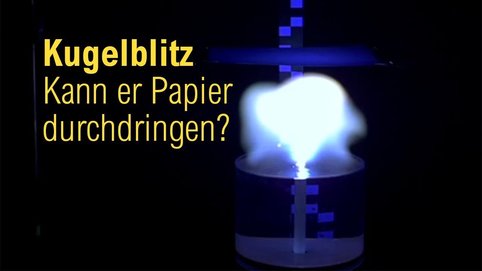
Ball lightning
The numerous accounts of ball lightning – in the past three centuries there have been over 2,000 reports – are contradictory: Observations describe mostly yellowish to reddish balls of up to 20 centimetres in diameter. Their appearance is often attributed to a lightning strike during a thunderstorm. They last for seconds to minutes and vanish quietly or with a bang. They move slowly, sometimes silently, sometimes with a hiss, but also come to a standstill and are alleged to penetrate walls.
Direct measurements are lacking; the photos available might also be showing comets, meteors or fireworks. Attempts at explanation give electric and magnetic fields or chemical energy a key role. There has also been talk of magnetic stimulation of the brain or the retina. In 2014 Chinese scientists engaged in the investigation of lightning during thunderstorms happend to accidentally observe a phenomenon that resembled the descriptions of ball lightning.
Attempts at explanation assign a key role to electric and magnetic fields or chemical energy. There has also been talk of magnetic stimulation of the brain or the retina. Laboratory investigations world-wide claim, for example, microwave discharges, electric arcs or electric discharges in water as cause.
The ball lightning experiment at IPP
At IPP in Garching globular objects – called plasmoids – are created above a water surface by an electrical discharge. The experiment is based on a Russian concept that was scientifically continued at IPP's former Berlin laboratory, where methods of plasma diagnostics were employed. In the end of 2009 the setup was moved to IPP Garching and redesigned. The investigations now focus on the plasma-chemical processes that probably serve as the energy source of the plasmoid and thus determine its life time.

The experimental setup consists of a water filled bucket made of acrylic glass in which two electrodes are mounted: one copper electrode on the bottom and a thick wire – the central electrode – at the water surface. Around the central electrode a ceramic sleeve searates a small reservoir of water from the rest of the water. By operating a switch a high voltage of up to 4.8 kilovolt can be applied between the electrodes. The voltage comes from a capacitor bank that is charged by a high voltage supply.
When the switch is activated, a strong electric current of 50 to 130 amperes passes through the water for about 150 milliseconds: Above the central electrode a luminescent plasma ball rises from the water surface and lasts for about 0.5 second. Closer analysis reveals that of the 10 liters of water in the bucket approximately 10 milligrams are vaporized and ionized. The plasmiod carries an energy of about 4 kilojoule. The lifetime depends strongly on the amount of energy.
The observation with a high-speed camera shows the initial formation of a surface discharge with filament-like structures before the plasmoid attains its spherical shape. Owing to the plasma's temperature of about 4000 Kelvin this develops into a mushroom-shaped structure, typical of an ascending hot gas. The temperature is also sufficient to produce an intense glow by exciting the atoms and molecules of the water and minerals contained in it. Hence, color and intensity of the glow can be modified by adding different salts to the water.
Ball lightning: From origin to decay
A plasmoid monitored by a high-speed camera (600 fps).
Around the hot ball a cooler edge region forms a skin. A sheet of paper that is put into the plasmoids path is therefore not affected. The plasmoid deforms and extinguishes, but does not penetrate the paper – contrary to what is reported of ball lightning.


